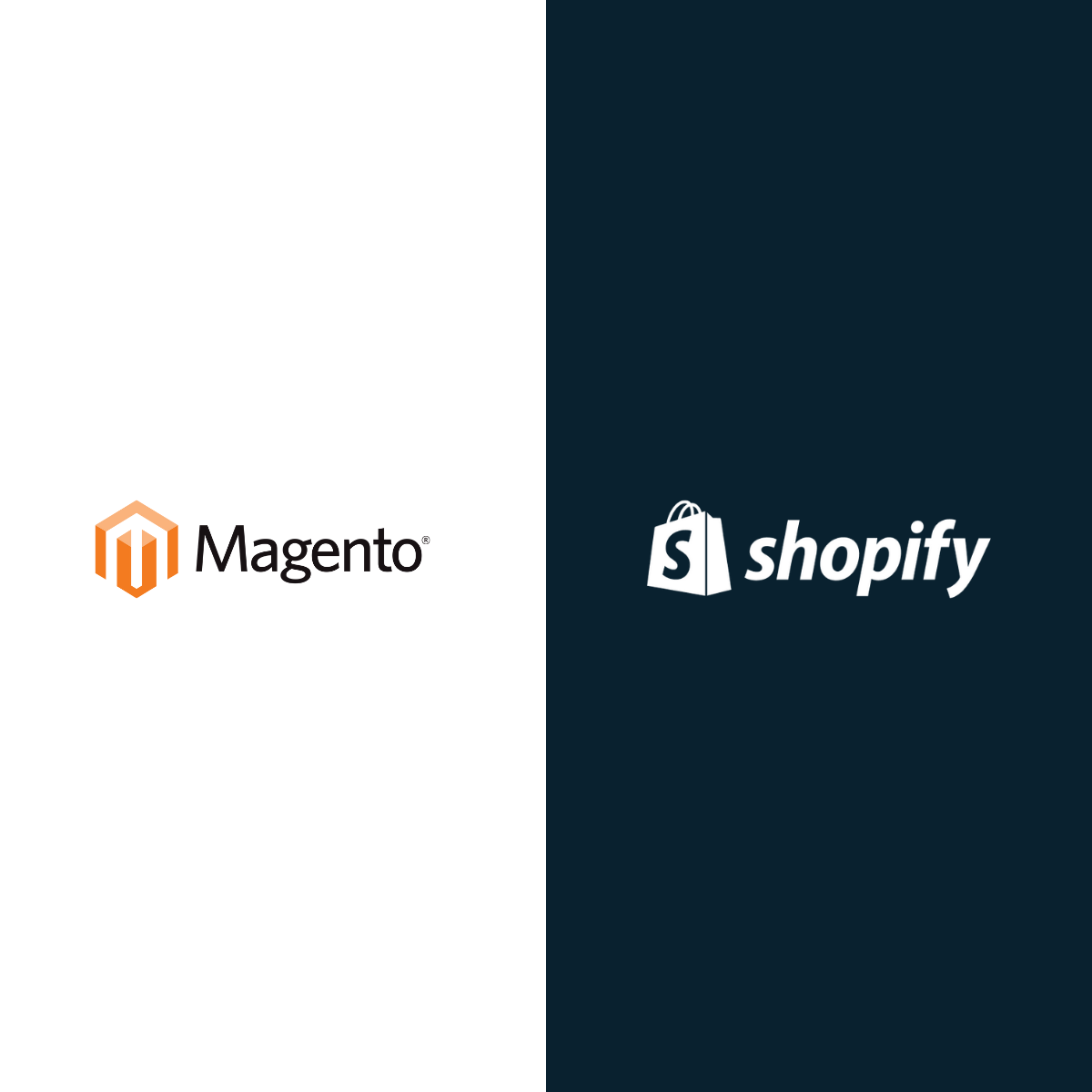5 Minutes
13. May 2025
Choosing the right e-commerce platform is one of the most important decisions a business can make—especially when growth, international expansion, or technical complexity come into play. For mid-sized to large businesses, the decision often comes down to two options: Magento (Adobe Commerce) and Shopify Plus.
Both platforms offer powerful features—but they’re built on fundamentally different principles. In this article, we’ll compare the two systems across key criteria: technology, scalability, cost, customization, and more.
Technical approach: SaaS vs. Open Source
Shopify Plus is a fully cloud-based Software-as-a-Service (SaaS) platform. Hosting, maintenance, updates, and security? All handled by Shopify. That means fewer internal IT resources, less risk—and more focus on your core business. The platform is centrally managed, constantly optimized, and incredibly reliable.
Magento, on the other hand, is open source. You get maximum flexibility, but also maximum responsibility. You’ll need an experienced development team or agency to manage your infrastructure, implement updates, and drive customizations. Magento gives you full control—but only if you’re ready to handle it.
In short: Shopify Plus takes the technical burden off your plate. Magento puts you in control—if that’s what you need (and can afford).
Time to Market: How fast can you launch?
With Shopify Plus, your store can go live within a few weeks—depending on complexity. Thanks to its intuitive UI, built-in features, and app ecosystem, you can launch fast and iterate quickly. That’s a major advantage for brands looking to scale or migrate with speed.
Magento requires a more intensive setup. Every feature is custom-coded, updates aren’t automatic, and implementation can stretch over several months—just for the initial launch and testing.
Our take: For MVPs or brands prioritizing speed, Shopify Plus clearly wins.
Cost: What are you really paying?
Shopify Plus starts at around $2,300/month—including hosting, security, ongoing support, and regular feature releases. Depending on your setup and order volume, you may also incur transaction fees or app costs. For a full breakdown of Shopify pricing plans and all potential costs, check out our detailed guide on the blog. The bottom line: costs stay predictable.
Magento's open-source version may be "free"—but don’t be misled. Hosting, development, security patches, and ongoing maintenance can easily push your monthly spend into the four- to five-figure range. The more custom you go, the more you’ll pay.
Bottom line: Magento might appear cheaper—but it usually isn’t, especially in the long run. The key factor is the Total Cost of Ownership. In our blog post, we break down all the hidden and visible costs involved in running a shop—from infrastructure to updates and ongoing support.
Flexibility & Customization
Shopify Plus offers a wide range of customization options through APIs, apps, and custom themes. Checkout flows can be modified using Shopify Functions and extensibility tools—but within limits. Shopify intentionally prioritizes stability and ease of maintenance.
Magento is as flexible as it gets. From the data structure to the checkout experience, almost everything is customizable. But you’ll need seasoned developers to build and maintain these custom features—nothing is plug-and-play.
Our verdict: Shopify Plus usually offers enough flexibility for most businesses. Magento is a strong option only if you require full customization and are prepared for the cost and complexity.
Scalability & Performance
Shopify Plus is built to scale—automatically. Whether you’re handling 100 or 100,000 orders a day, the platform adapts with no downtime or performance issues. Its global CDN ensures fast load times, wherever your customers are.
Magento can scale too—but only with ongoing infrastructure work. You’ll need to fine-tune your hosting, set up caching, and monitor bottlenecks closely, especially in high-traffic or multi-market environments.
Key takeaway: Shopify Plus manages performance for you. With Magento, you’ll need to do it yourself.
Security & Maintenance
Shopify Plus is a closed platform with centralized maintenance. Security patches, bug fixes, and feature updates are rolled out automatically—no action required on your part.
Magento requires manual updates and patches. If you miss one, your store could become vulnerable—especially when handling sensitive customer or payment data.
From experience: This is often a deal-breaker. Many brands don’t want the burden of managing security in-house. That’s why we’ve already helped several brands migrate from Magento to Shopify Plus. Explore our migration case studies.
Extensions & Ecosystem
Shopify Plus supports over 8,000 trusted apps, easily integrated for payments, logistics, loyalty, ERP, and more. Plus, there’s a large global partner ecosystem for strategy, design, and development.
Magento also offers around 4,400 extensions—but with more limitations. Many plugins are incompatible with one another or require manual tweaks to work properly. Again, the onus is on your developers.
Final Verdict: Magento or Shopify Plus?
If you're a growing e-commerce brand focused on speed, simplicity, and scalability, Shopify Plus is likely your best bet. It minimizes technical overhead, keeps your operations flexible, and lets you focus on what really matters: your business.
Magento may be a good fit if you need highly specific functionality, have a dedicated in-house dev team, and are ready for long-term investment in infrastructure.
Considering a platform migration?
We’ve helped brands successfully move from Magento to Shopify Plus—with a clear roadmap, technical precision, and real business insight. Check out our Shopify migration services.
Ready to talk? Tell us your story.
